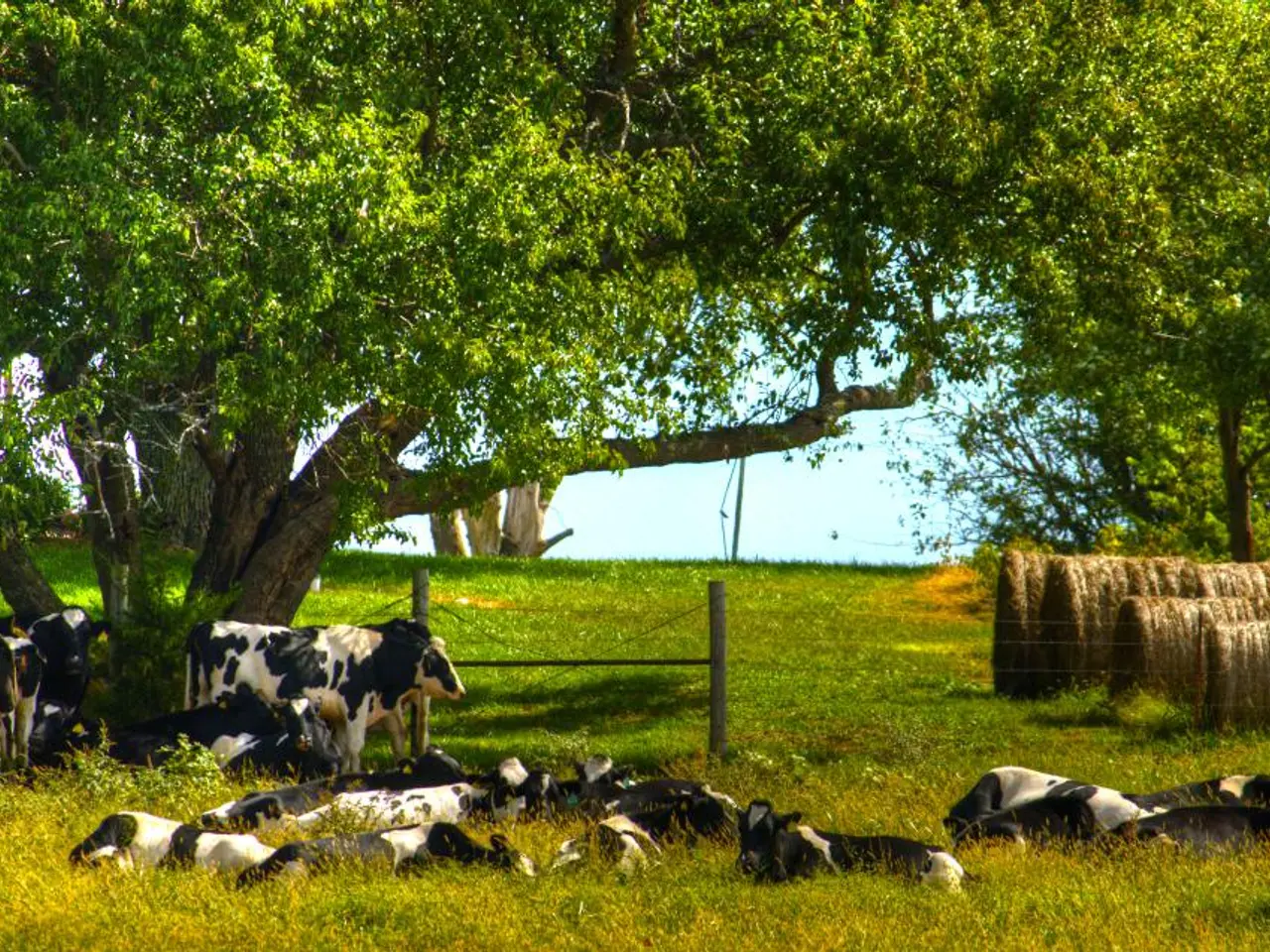Tiniest Cattle Breed Originated in Kerala Bringing Advantages for Farmers Globally
In the picturesque village of Vaikom, nestled near Kerala's famous Vembanad Lake, a small but mighty breed of cattle is making a significant impact on the lives of farmers across the region. Known as Vechur cattle, these diminutive cows are not only the world's smallest, standing at approximately 89 cm tall for females and 99 cm for males, but they are also proving to be a valuable asset for small and marginal farmers.
Vechur cattle are primarily reared in an extensive system, allowing them to graze freely during the day and confine themselves to small sheds in the evening. The simple structures of these sheds are adorned with tree leaves spread on the floor as bedding. Manure is removed three to four times a year and used as organic manure in the fields, contributing to a sustainable farming system.
The unique characteristics of Vechur cattle make them ideal for smallholder farmers. They thrive on grazing, crop residues, and tree leaves, making them less dependent on commercial cattle feed. This low-cost, high-value asset provides steady returns with minimal expenses, making it an attractive option for farmers who are striving to make ends meet.
Farmers who rear Vechur cattle can participate in niche markets such as organic milk and traditional dairy products, bringing higher income. The milk fetches a premium price in local markets, giving farmers better returns compared to crossbred cows that require heavy feeding. A Vechur cow produces around 2-3 liters of milk per day, with an average lactation yield of about 561 kg.
The cultural and traditional importance of Vechur cattle is another reason why they are highly valued. Many households keep them as part of their heritage, and the breed has a deep-rooted connection to the local community. The milk is believed to be healthier, especially for children and elderly people, and to have medicinal properties in Ayurveda. Furthermore, the dung of Vechur cattle is highly valued as organic manure, particularly in Kerala's farming system for paddy fields and home gardens.
The growing demand for Vechur cattle and their milk encourages conservation efforts, ensuring that this unique breed continues to thrive. The Vechur cattle breed originated in the regions of Kuttanad and Kerala due to heavy rainfall, waterlogged fields, humid weather, and low-input farming practices. This adaptation to local conditions has made Vechur cattle a resilient and hardy breed, well-suited to the challenges faced by small and marginal farmers.
As the world becomes increasingly aware of the importance of sustainable farming practices and supporting local communities, the Vechur cattle breed is gaining recognition as a model for smallholder farming. The breed's success in Kerala is inspiring similar initiatives in other parts of India, such as Mithun farming in Northeast India, which offers a low-cost, high-return livestock opportunity for hill farmers.
In conclusion, the Vechur cattle breed is a shining example of how small and marginal farmers can benefit from sustainable, low-input farming practices. By rearing Vechur cattle, farmers can improve their livelihoods, participate in niche markets, and contribute to the conservation of this unique breed. As the demand for Vechur cattle and their milk continues to grow, it is hoped that this small but mighty breed will continue to make a big impact on the lives of farmers and communities across India.








